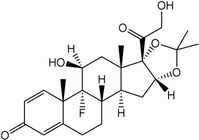Xolair, Genentech's new anti-asthma injectable, has been available for only three months, but many health plans have already implemented formulary policies to cover it under the prescription benefit. Typically, payers do not add new drugs to their formularies until they have been available for six months to a year. But many P&T committees felt obliged to consider Xolair immediately, because its action of inhibiting immunoglobulin epsilon (IgE) makes it a first-in-class product, and it is touted as being able to prevent asthma attacks and potentially save health plans money.
Xolair is indicated for patients with moderate to severe asthma caused by allergies. The drug is very expensive, with the annual cost per patient averaging $10,000 and reaching as high as $24,000. The medication also has complex administration requirements, because patients who receive the medication for the first time are at risk of anaphylaxis, a severe and potentially fatal systemic allergic reaction. As a result, the first dose must be administered in a doctor's office, after which the patient must be monitored for two hours.
In fact, the risk of severe side effects led WellPoint Health Networks, Inc. to hold off on deciding whether to cover the drug, says insurer spokesperson Lisa Mee-Stephenson. The insurer's P&T committee has referred the drug to a medical committee to evaluate potential risks and benefits. With more complex drugs such as Xolair, it's common for WellPoint to take a year or more to make a coverage decision, she says.
The California Public Employees' Retirement System has not placed Xolair on the formulary for its two self-insured PPOs. Instead, patients are referred to CalPERS' PBM, Caremark Rx, which has a special toll-free number for specialty drug requests. A Caremark specialty pharmacist then would contact the member's physician to obtain a diagnosis. The patient would be required to shell out the nonformulary copay for the drug unless a medical-necessity exception is approved, says CalPERS spokesperson Clark McKinley.
Other insurers already have added the drug to formularies. Still, warns Chris Nee, Pharm.D., president of health care consulting firm PharMedQuest, just because the drug is on formulary doesn't mean it gets dispensed. At one 300,000-member health plan for which his company handles preauthorization of pharmacy claims, Xolair has never been dispensed, Nee says. "Coverage is widespread, but paying for it and the availability to patients is severely handicapped," he says.
Many new drugs have the potential to gain utilization by off-label prescribing, but widespread formulary restrictions will prohibit that to a large degree. The most common types of restrictions that health plans are applying to Xolair are prior-authorization requirements that include step-therapy trials, skin tests to prove that the patient's asthma is allergy-induced, and documentation of the severity of the patient's condition. Xolair's high cost and complex administration define it as a "specialty pharmaceutical," but most payers don't appear to be using a specialty pharmacy vendor to help them manage and monitor Xolair's utilization.
Nevertheless, the drug is winning converts, Genentech reports. The company said earlier this month that Xolair had sales of $6.8 million during the third quarter of 2003. Specialty pharmacy Accredo Health, a distributor of Xolair, expects the anti-IgE drug to become significant in revenue generation during 2004-2005, and AdvancePCS has predicted Xolair will have a major impact on health plans' asthma and allergy-related drug costs.
Call McKinley at (916) 326-3991 or Nee at (714) 926-7131.
COPYRIGHT 2003 Atlantic Information Services, Inc.
COPYRIGHT 2003 Gale Group



